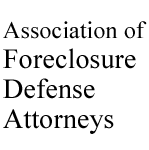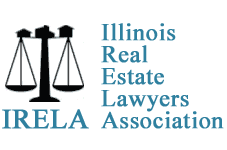1512 Artaius Parkway, Suite 300,
Libertyville, IL 60048
Call for a FREE Phone Consultation
847-549-0000
Video Consultations Also Available
 Spanish
Spanish Cantonese
CantoneseServing Clients Across 7 Illinois Locations
Recent Blog Posts
TIC vs. Joint Tenancy in Illinois Multi-Generational Homes
 Increasingly, multiple generations of Illinois families are living under one roof. Parents, adult children, and even grandparents are combining households for financial, cultural, or caregiving reasons, but in some cases, this can have devastating consequences. Parents may add adult children or grandchildren to the deed, but how that is done is crucial. In fact, how the deed is titled may well become one of the most important estate planning decisions you will ever make if multiple generations live in your home.
Increasingly, multiple generations of Illinois families are living under one roof. Parents, adult children, and even grandparents are combining households for financial, cultural, or caregiving reasons, but in some cases, this can have devastating consequences. Parents may add adult children or grandchildren to the deed, but how that is done is crucial. In fact, how the deed is titled may well become one of the most important estate planning decisions you will ever make if multiple generations live in your home.
Whether your home is held as tenants in common (TIC) or as joint tenants with right of survivorship can have far-reaching effects, including probate exposure, Medicaid risks, creditor claims, inheritance outcomes, and family conflict. The distinction between TIC and joint tenancy may seem purely technical, but it can profoundly affect family stability and ownership rights. Understanding the differences now can help prevent financial and legal headaches in the future. A knowledgeable Lake Forest, IL estate planning attorney will help ensure your home goes to those you choose.
Predatory Lending to Seniors as an Illinois Foreclosure Defense
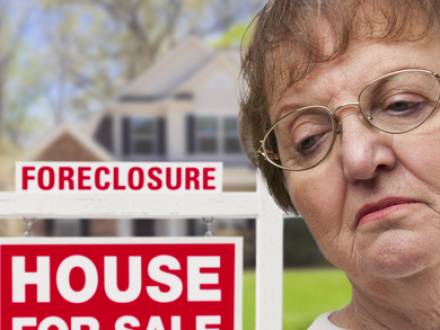 Unfortunately, many Illinois senior citizens have been steered into high-cost mortgages, unfair refinancing deals, or home equity loans they could never realistically repay. Many of these "deals" were cloaked under terms like "no-risk refinancing," "quick cash-outs," or "affordable loans." What these seniors may have ended up with is high-interest mortgages, hidden fees, and monthly payments they could never sustain on a fixed income.
Unfortunately, many Illinois senior citizens have been steered into high-cost mortgages, unfair refinancing deals, or home equity loans they could never realistically repay. Many of these "deals" were cloaked under terms like "no-risk refinancing," "quick cash-outs," or "affordable loans." What these seniors may have ended up with is high-interest mortgages, hidden fees, and monthly payments they could never sustain on a fixed income.
When foreclosure notices begin arriving, most of these senior homeowners blame themselves, unaware they may be victims of unlawful, predatory lending practices. Illinois law offers robust protections for seniors who were misled, exploited, or are victims of predatory lending practices (815 ILCS 123/).
In fact, by challenging the validity of the loan, the lender’s conduct, or the way the mortgage was sold, seniors can often delay or stop foreclosure and potentially negotiate better loan terms. If you are a senior who is the victim of a predatory loan and are now facing foreclosure as a result, you must speak to an experienced Grayslake, IL foreclosure defense lawyer.
Hidden Defects in Illinois "As-Is" Home Sales Can Backfire
 For Illinois homebuyers, a bargain price on a fixer-upper can look tempting - until they learn what "as-is" really means. Illinois sellers may assume that labeling a property as-is allows them to walk away clean with no worries about disclosure. It is important for sellers and buyers alike to have a full understanding of what "as-is" really means, and to involve a real estate lawyer in any transactions.
For Illinois homebuyers, a bargain price on a fixer-upper can look tempting - until they learn what "as-is" really means. Illinois sellers may assume that labeling a property as-is allows them to walk away clean with no worries about disclosure. It is important for sellers and buyers alike to have a full understanding of what "as-is" really means, and to involve a real estate lawyer in any transactions.
Buyers could inherit costly problems in an as-is sale, while sellers must understand that labeling a property "as-is" does not erase the duty to be honest about known defects. Whether you are selling a fixer-upper or inherited property, or buying without understanding disclosure limits, you could find yourself with a serious problem after the paperwork is signed. An experienced Waukegan, IL real estate lawyer can help ensure no mistakes are made that can come back to haunt you later on.
Illinois Foreclosure Deficiency Judgments Explained
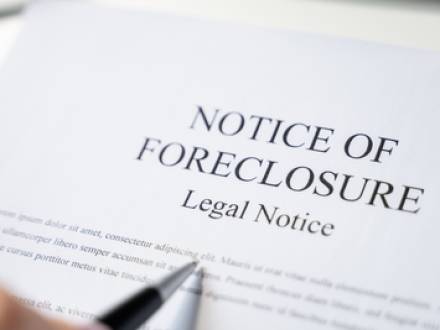 Many Illinois homeowners believe that once their home has been foreclosed on and sold, they no longer have any financial obligations related to the home. Unfortunately, that is not always the case. Under Illinois law, mortgage lenders may pursue a deficiency judgment. This is a court order requiring the borrower to pay the remaining balance if the foreclosure sale does not cover the full amount of the mortgage debt.
Many Illinois homeowners believe that once their home has been foreclosed on and sold, they no longer have any financial obligations related to the home. Unfortunately, that is not always the case. Under Illinois law, mortgage lenders may pursue a deficiency judgment. This is a court order requiring the borrower to pay the remaining balance if the foreclosure sale does not cover the full amount of the mortgage debt.
Whether or not a bank can or will sue depends on the type of foreclosure, the sale price, and how the judgment was entered. A Round Lake, IL foreclosure defense attorney can help you understand how deficiency judgments work and how to challenge or limit those judgments.
What You Must Know About Deficiency Judgments
Illinois law (735 ILCS 5/15-1511) addresses how a deficiency judgment may be entered when a foreclosure sale fails to satisfy the balance due on the mortgage. The lender must file a motion with the court to request a deficiency judgment. At that point, the court will verify that the sale price was fair, which can be a safeguard against the lender accepting a low offer. If the court finds that the home's sale price was not fair, the lender must provide evidence of value through appraisals and other comparable listings to justify the sale price.
Illinois Real Estate: Stigmatized Property Law
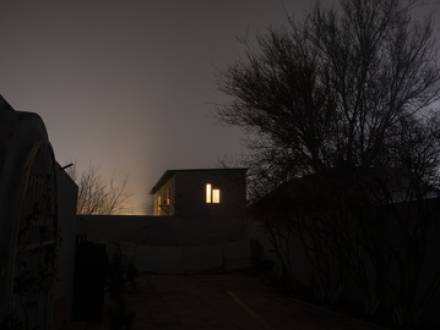 Suppose someone died in the house you are about to buy, or that it was once the hideout for a notorious criminal. Or, what if the house is allegedly haunted, or there was a violent crime that occurred in the house? Would you want to know these things? Would you feel as though you were entitled to know? Under the Illinois Residential Real Property Disclosure Act (765 ILCS 77), only physical defects and material conditions must be disclosed to buyers.
Suppose someone died in the house you are about to buy, or that it was once the hideout for a notorious criminal. Or, what if the house is allegedly haunted, or there was a violent crime that occurred in the house? Would you want to know these things? Would you feel as though you were entitled to know? Under the Illinois Residential Real Property Disclosure Act (765 ILCS 77), only physical defects and material conditions must be disclosed to buyers.
Under the Illinois Real Estate License Act (225 ILCS 454/), brokers are required to be honest, but must only disclose facts that have a direct and detrimental physical effect on the property, which excludes nonphysical "stigma." If you are unsure what constitutes a "stigmatized property," it is important that you speak to an experienced Gurnee, IL real estate attorney. Having a knowledgeable real estate lawyer who can help ensure you do not make any missteps that could be hard to recover from gives you a definite advantage when purchasing property in Illinois.
Do Illinois Renters Have Rights During Foreclosure?
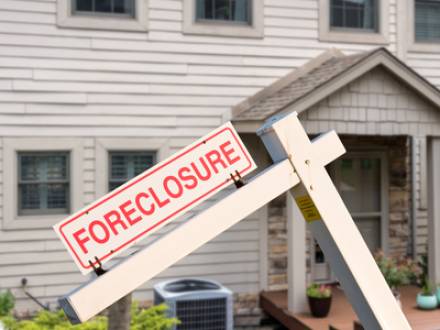 Foreclosure may sound like a problem only for the homeowner. Unfortunately, that is not always the reality. If you are renting a home, and your landlord’s property goes into foreclosure while you are living there, you may be left with nothing but questions. Can you be forced to leave your home? Are you still required to pay rent? Is your landlord the bank, the buyer, or is there still a landlord?
Foreclosure may sound like a problem only for the homeowner. Unfortunately, that is not always the reality. If you are renting a home, and your landlord’s property goes into foreclosure while you are living there, you may be left with nothing but questions. Can you be forced to leave your home? Are you still required to pay rent? Is your landlord the bank, the buyer, or is there still a landlord?
An Illinois foreclosure can be disruptive, to say the least. That said, there are certain protections in the state provided to tenants to keep them from being blindsided by a foreclosure and possible eviction. To find out more about how your landlord’s foreclosure could potentially affect you and your family, it can be beneficial to speak to a knowledgeable Grayslake, IL foreclosure defense lawyer.
How Could Foreclosure Affect Illinois Renters?
While an Illinois foreclosure transfers ownership, it does not erase the fact that tenants live in the home and have certain rights. Illinois renters are protected during a foreclosure by the federal Protecting Tenants in Foreclosure ACT (PTFA) and Illinois’ mortgage foreclosure laws (735 ILCS 5/15-1504).
Radon Disclosure: A Legal Obligation That Surprises Sellers
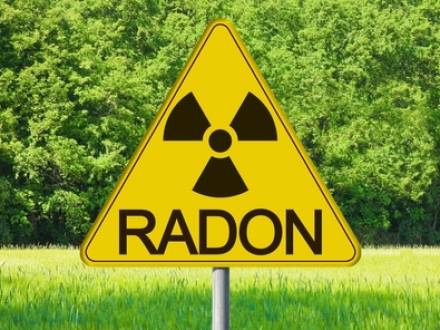 Illinois sellers may believe they have done everything right: they prepped their home for sale, ordered a home inspection, and made cosmetic upgrades. Now they are ready for showings and negotiating offers, yet many sellers in the state are unaware that they may have overlooked obligations involving radon. Radon is a naturally occurring radioactive gas associated with significant health risks, and it is something that neither buyers nor sellers may be aware of during real estate transactions.
Illinois sellers may believe they have done everything right: they prepped their home for sale, ordered a home inspection, and made cosmetic upgrades. Now they are ready for showings and negotiating offers, yet many sellers in the state are unaware that they may have overlooked obligations involving radon. Radon is a naturally occurring radioactive gas associated with significant health risks, and it is something that neither buyers nor sellers may be aware of during real estate transactions.
Home sellers in the state are legally obligated to disclose any known radon hazards to potential buyers. If the home seller is aware of the presence of radon and fails to disclose this fact, the result could be legal and financial headaches for many years to come. Both buyers and sellers must understand their radon disclosure responsibilities to prevent future disputes and protect buyers. Consulting a knowledgeable Waukegan, IL real estate lawyer ensures that both parties are protected regarding radon exposure.
Can Robo-Signed Documents Provide a Foreclosure Defense?
 In the wake of the 2008 housing crisis, it came to light that bank employees or third-party contractors had signed thousands of foreclosure affidavits and mortgage documents without reviewing them. In turn, this led to wrongful foreclosures across the country. While some safeguards were put into place following this dark time, some Illinois homeowners may still face foreclosure cases built on questionable paperwork.
In the wake of the 2008 housing crisis, it came to light that bank employees or third-party contractors had signed thousands of foreclosure affidavits and mortgage documents without reviewing them. In turn, this led to wrongful foreclosures across the country. While some safeguards were put into place following this dark time, some Illinois homeowners may still face foreclosure cases built on questionable paperwork.
Knowing how to spot and challenge robo-signed documents can make all the difference between losing a home to foreclosure and keeping it. If you are facing foreclosure in Illinois, you should never assume the bank’s paperwork is without flaws. An experienced Round Lake, IL foreclosure defense attorney can identify robo-signed documents, potentially using them to fight for your home.
How Illinois Treats Tiny Homes in Real Estate Deals
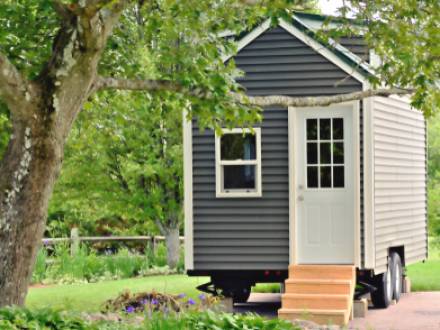 As a result of the current housing crisis, tiny homes are gaining popularity, despite their size (the average tiny home is about 10 times smaller than the average home). While tiny homes are certainly more affordable, with the average price at $67,000, they cost 38 percent more per square foot than full-sized homes. Almost three-fourths of tiny homeowners have no mortgage, as compared to only 29 percent of traditional homeowners with no mortgage.
As a result of the current housing crisis, tiny homes are gaining popularity, despite their size (the average tiny home is about 10 times smaller than the average home). While tiny homes are certainly more affordable, with the average price at $67,000, they cost 38 percent more per square foot than full-sized homes. Almost three-fourths of tiny homeowners have no mortgage, as compared to only 29 percent of traditional homeowners with no mortgage.
The national average cost of a conventional home is $272,000. A 30-year loan at 4.25 percent interest brings the cost of that home to $481,704, which is another reason more people are considering tiny homes. If you have your eye on a tiny home, it is important that you understand how Illinois real estate law treats tiny homes – from zoning and financing, to buying, selling, and property classification.
Do You Own the Sky? Air Rights and Real Estate in Illinois
 If you have never purchased property in a big city, you may not have heard the terms "air rights" or "vertical development." However, in dense areas like Chicago and New York, these terms are familiar to all real estate buyers and developers. Even if you are familiar with air rights, you may not think these rights have anything to do with residential real estate.
If you have never purchased property in a big city, you may not have heard the terms "air rights" or "vertical development." However, in dense areas like Chicago and New York, these terms are familiar to all real estate buyers and developers. Even if you are familiar with air rights, you may not think these rights have anything to do with residential real estate.
This is where you might be wrong. Property values in crowded cities depend on more than square footage – they can also hinge on what is above your roofline. Air rights encompass the ability to use or sell the space above your property and are often overlooked in Illinois real estate deals. Depending on the context, air rights can bring significant value or result in major headaches.
Even as a homeowner concerned about losing your skyline view, understanding how air rights work is important. If you are considering purchasing residential real estate in a crowded city area, it is always best to have an experienced North Chicago, IL real estate lawyer to help ensure you do not encounter any glitches.
 Stop Foreclosure
Stop Foreclosure


